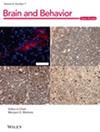Improvements in Sleep Quality in Patients With Major Depressive and Generalized Anxiety Disorders Treated With Individualized, Parcel-Guided Transcranial Magnetic Stimulation
Abstract
Introduction
Poor quality sleep has often been cited as a cause of lowered quality of life in patients with affective disorders such as major depressive disorder (MDD) and generalized anxiety disorder (GAD). As sleep and affective disorders are affected by multi-network interactions, we hypothesize that the modulation of the central executive network (CEN), salience, and default mode networks (DMNs) through individualized repetitive transcranial magnetic stimulation (rTMS) may improve sleep and quality of life.
Methods
A retrospective analysis from 2020 to 2023 was conducted in patients with affective disorders at Cingulum Health. Multiple targets were selected based on anomalies detected from individual, functional connectivity networks from a machine-learning connectivity software. rTMS was conducted with accelerated continuous or intermittent theta burst stimulation (TBS) based on the anomaly detected. Pittsburgh Sleep Quality Index (PSQI), EuroQol (EQ5D), Beck's Depression Inventory (BDI), and the General Anxiety Disorder-7 (GAD-7) questionnaires were administered prior to, after, and at follow-up of rTMS.
Results
Twenty-seven patients were identified, and the most common diagnoses were MDD (41%) or MDD with GAD (41%). All patients had at least one rTMS target in the CEN. The most common target (19 patients) was L8Av in the dorsolateral prefrontal cortex (dlPFC). Patients experienced significant improvements in sleep, quality of life, depressive, and anxiety symptoms after rTMS and during follow-up. Improvements in sleep correlated with quality of life at follow-up.
Conclusion
This study suggests that personalized, parcel-guided rTMS is safe and may provide sustained improvements in sleep, quality of life, and affective symptoms for patients with affective disorders.


 求助内容:
求助内容: 应助结果提醒方式:
应助结果提醒方式:


